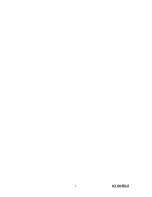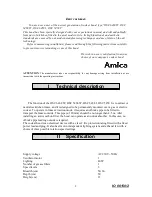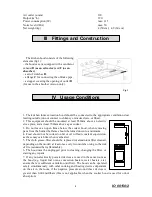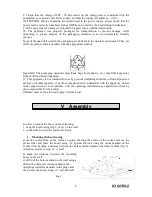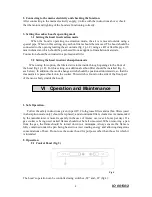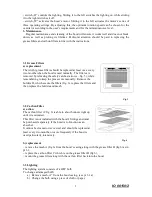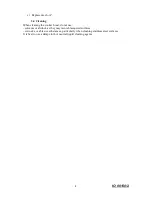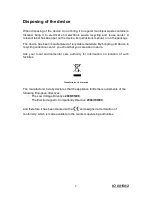
Air outlet (ø mm)
120
Output (m
3
/h)
290
Power consumption (W)
max. 115
Noise level (dBA)
max. 50
Net weight (kg) 4 (50 cm); 4,9 (60 cm)
The kitchen hood consists of the following
elements (fig.1):
- the hood case A, equipped with a ventilator
exhaust B (as an extractor) and F (as an
absorber),
- a set of switches D,
- a flange C for connecting the off-take pipe,
- a stopper covering the opening of outlet B
(for use in the absorber version only).
Fig.1
1. The kitchen fume extraction hood should be connected to the appropriate ventilation duct
leading outside (do not connect to chimney or smoke ducts, or flues).
2. This equipment should be mounted at least 650mm above an electric
stove plate, and at least 700mm above a gas cooker.
3. Do not leave an open flame below the cooker hood, when removing
pans from the burner the flame should be turned down to a minimum.
4. Food should not be cooked on fat or oil without constant supervision,
as these may catch fire when overheated.
5. The cloth grease-filter should be replaced (or aluminium filter cleaned,
depending on the model) at least once every two months owing to the risk
of fire (saturated fat is flammable).
6. The hood must be unplugged prior to cleaning, changing the filter, or
starting any repairs.
7. If any non-electrically powered devices are used in the same room as
the hood (e.g. liquid fuel ovens, convection heaters, water heaters, etc.)
ensure there is sufficient ventilation (airflow). The hood can be operated
safely simultaneously with other cooking and heating devices dependent
on the air in the room, if the negative pressure around these devices is
greater than 0.004 millibars (this is not applicable when the cooker hood is used for odour
absorption).
IO 00150
/2
III
Fittings and Construction
IV Usage Conditions
4
Summary of Contents for OSC 5458 I
Page 2: ...IO 00150 2 2 ...


